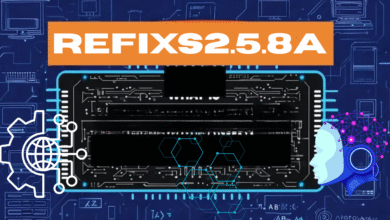OpenWrt_s905d_n1: The Ultimate Guide to a Powerful Router on a Budget

For years, tech enthusiasts and networking aficionados have sought ways to push the boundaries of consumer-grade hardware. They have looked beyond the standard routers offered by mainstream brands, searching for a solution that offers unparalleled control, robust performance, and the flexibility to handle advanced networking tasks without breaking the bank. This quest has led many to discover a remarkable pairing: the powerful openwrt_s905d_n1 combination. This refers to the process of running the OpenWrt Linux-based operating system on the Amlogic S905D-powered Phicomm N1 media player box, transforming it from a simple streaming device into a formidable network appliance.
This comprehensive guide will delve deep into the world of the openwrt_s905d_n1 setup. We will explore what makes this combination so special, the hardware at its core, the process of installation, and the incredible potential it unlocks for your home network.
What is the OpenWrt_s905d_n1 Project?
At its heart, the openwrt_s905d_n1 project is a brilliant example of hardware repurposing. It involves installing the OpenWrt operating system onto the Phicomm N1 device. The Phicomm N1 was originally marketed as a media streaming box, similar to an Amazon Fire TV Stick or a Roku, but powered by the capable Amlogic S905D system-on-a-chip (SoC). However, the community quickly realized that its hardware specifications made it an ideal candidate for a much more demanding role: a full-fledged router.
OpenWrt is a highly versatile, open-source operating system based on the Linux kernel. It is specifically designed for embedded devices, particularly routers. Unlike the proprietary firmware that comes pre-installed on most commercial routers, OpenWrt provides users with complete control over their network. It offers a massive repository of software packages that can be installed to add functionality like VPN client/server support, advanced firewalling, traffic shaping, ad blocking, and much more. The marriage of this powerful software with the unexpectedly capable Phicomm N1 hardware is what creates the magic of the openwrt_s905d_n1 setup.
Why the Phicomm N1 Hardware is Ideal
The success of the openwrt_s905d_n1 project hinges entirely on the underlying hardware of the Phicomm N1. When compared to even mid-range consumer routers, the N1 boasts several significant advantages that make it a powerhouse for networking tasks.
First and foremost is its processing power. The Amlogic S905D is a quad-core ARM Cortex-A53 CPU, a processor architecture that is far more powerful than the MIPS-based CPUs found in most routers in its original price range. This raw CPU power allows the device to handle encryption and decryption for VPN connections at high speeds, perform complex traffic analysis without breaking a sweat, and run numerous additional services simultaneously without becoming a bottleneck.
Secondly, the device features a full gigabit Ethernet port. This is crucial for a router, as it ensures that the wired connection between your modem and your network can handle internet speeds up to 1000 Mbps without any loss. Many cheaper routers still use Fast Ethernet (100 Mbps) ports, which immediately cap your potential internet speed.
Furthermore, the N1 comes with 2GB of RAM and 8GB of eMMC storage. This is an enormous amount of memory and storage for a router. Most standard routers have 128MB or 256MB of RAM and 16MB to 32MB of flash storage. The abundant resources on the openwrt_s905d_n1 device mean you can install dozens of packages and have plenty of room for logs, data, and temporary files without ever worrying about running out of space.
Finally, its small, quiet, and low-power form factor is a major benefit. It consumes very little electricity, making it cheap to run 24/7, and it produces no noise as it is passively cooled.
Preparing for the OpenWrt_s905d_n1 Installation
Before you begin the process of creating your own openwrt_s905d_n1 device, you need to gather the necessary tools and components. Proper preparation is key to a smooth and successful installation.
You will, of course, need a Phicomm N1 box. These are no longer in production, but they are readily available on secondary markets like eBay or AliExpress. Ensure you are purchasing the correct model. Alongside the N1, you will need a USB Type-A to Type-A data cable, often called a “male-to-male” USB cable. This is not a standard cable, so you will likely need to purchase one separately.
A microSD card is another essential item. A capacity of 8GB or more is recommended, and a good quality, brand-name card will ensure reliability. This card will be used to temporarily boot the system during the installation process. You will also need a computer to write the OpenWrt image to the microSD card and to perform the initial setup.
The software you need includes a program to write disk images, such as BalenaEtcher or Rufus. You will also need to download the specific version of OpenWrt that has been built for the openwrt_s905d_n1. It is critical to use an image designed specifically for this device, as a generic OpenWrt image will not work. The community-maintained images are typically found on developer forums or file-sharing platforms.
The Installation Process Overview
The installation process for the openwrt_s905d_n1 can seem daunting to newcomers, but it can be broken down into a series of logical steps. It primarily involves booting the N1 from a microSD card to overwrite the internal storage with the new OpenWrt system.
The first step is to prepare the microSD card. Using your computer and an image-writing tool, you write the downloaded OpenWrt image file to the microSD card. Once written, the card is inserted into the back of the powered-off Phicomm N1 device.
Next, you connect the N1 to your computer using the special USB-A to USB-A cable. The key to initiating the installation process is to use a software tool on your computer, often provided in the installation package, that sends a boot command to the N1 while it is powering on. This forces the device to bypass its internal storage and boot from the microSD card instead.
Once booted from the microSD card, you typically gain access to the device via a command-line interface over a network connection or a serial connection. From here, you execute a series of commands that will erase the old Android-based system on the internal eMMC storage and write the OpenWrt system to it. After the commands complete successfully, you power off the device, remove the microSD card, and power it back on. Your Phicomm N1 will now boot directly into OpenWrt, completing the core openwrt_s905d_n1 transformation.
Unlocking Advanced Networking Features
Once you have successfully installed OpenWrt, your openwrt_s905d_n1 device transforms from a simple media box into a networking Swiss Army knife. The true value of this setup lies in the vast ecosystem of software packages available for OpenWrt.
One of the most popular uses is as a VPN gateway. You can install OpenVPN or WireGuard packages and configure your openwrt_s905d_n1 to route all your household traffic through a secure VPN tunnel. Thanks to the powerful CPU, it can achieve VPN speeds that dwarf those of most commercial VPN routers.
You can also install the SQM (Smart Queue Management) package to combat bufferbloat. This feature intelligently manages network traffic to minimize latency, which is a game-changer for online gaming, video conferencing, and general web browsing, especially on congested networks.
For those concerned with privacy and security, installing an ad-blocking package like AdBlock or using the DNS-based filtering provided by services like DNSMASQ with blocklists can remove ads, trackers, and malicious websites for every device on your network.
Other possibilities include setting up a guest network with isolated access, creating a network-attached storage (NAS) server by connecting a USB hard drive, running a dynamic DNS client, or even using it as a central controller for home automation software. The flexibility of the openwrt_s905d_n1 setup is nearly limitless.
Considerations and Potential Challenges
While the openwrt_s905d_n1 project offers incredible value, it is not without its challenges. It is primarily a DIY endeavor aimed at users who are comfortable with technical procedures. The installation process involves using the command line and can be unforgiving if steps are skipped or performed incorrectly.
Finding a reliable source for the Phicomm N1 can also be a hurdle, as stock is limited to existing second-hand supplies. Prices can fluctuate based on demand. Furthermore, because the project is community-driven, software support is not official from OpenWrt. You are reliant on builds from talented developers within the community, which means you must ensure you download images from trusted sources to avoid security risks.
You will also need a separate wireless access point if you require Wi-Fi, as the built-in Wi-Fi on the N1 is often not fully supported or is underpowered for use as a primary AP. Most users pair their openwrt_s905d_n1 router with a dedicated access point for optimal wireless performance.
Conclusion
The openwrt_s905d_n1 project stands as a testament to the innovation and resourcefulness of the open-source community. It takes an inexpensive and readily available piece of hardware and unlocks its hidden potential, creating a network device that can outperform routers costing many times more. The journey from a Phicomm N1 media box to a powerful openwrt_s905d_n1 router requires some technical effort, but the reward is a level of control, performance, and flexibility that is simply unattainable with off-the-shelf consumer products. For anyone looking to deepen their understanding of networking, enhance their home internet experience, or simply build a incredibly capable router on a tight budget, the path of the openwrt_s905d_n1 remains one of the most rewarding projects to undertake.



